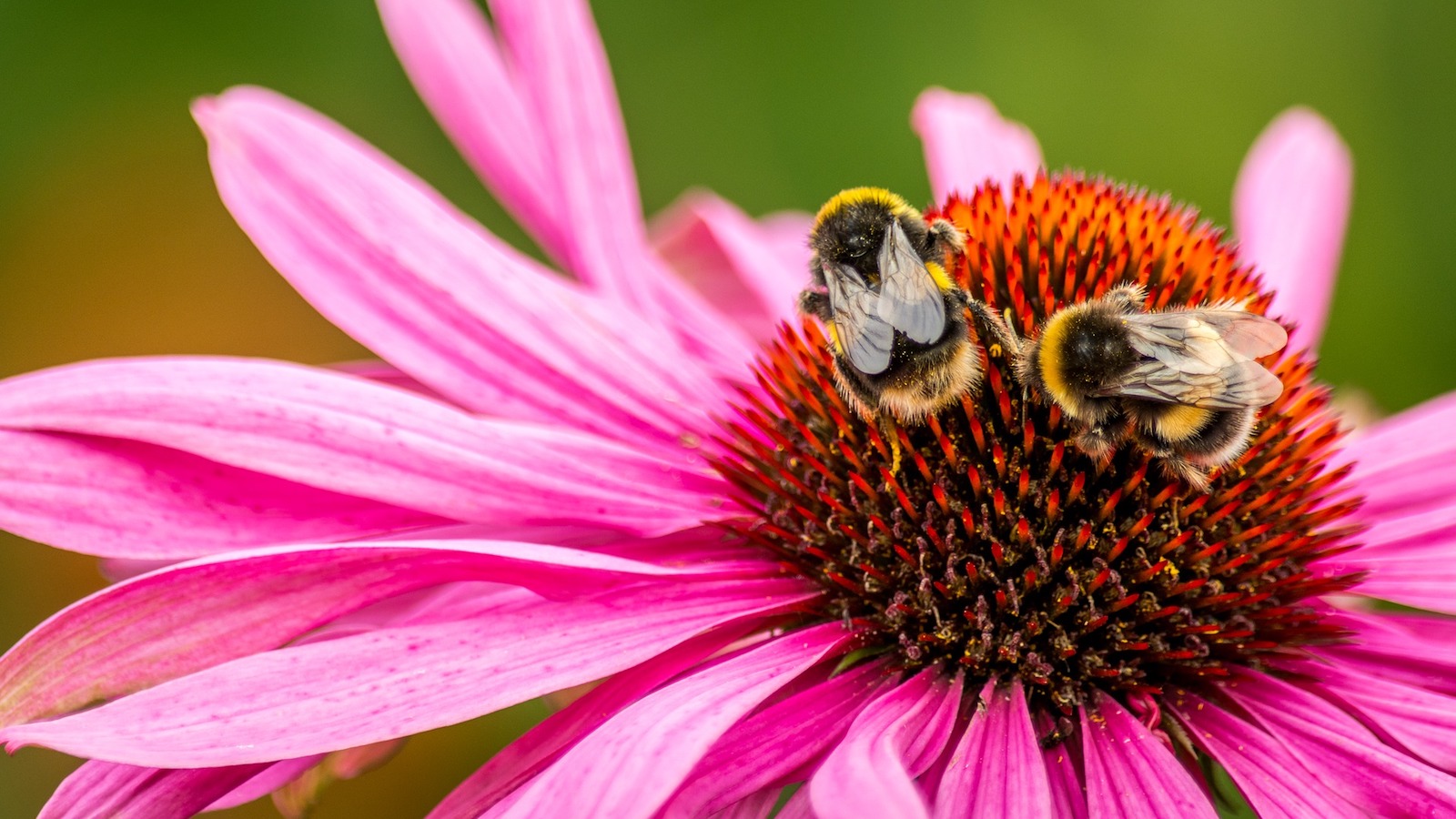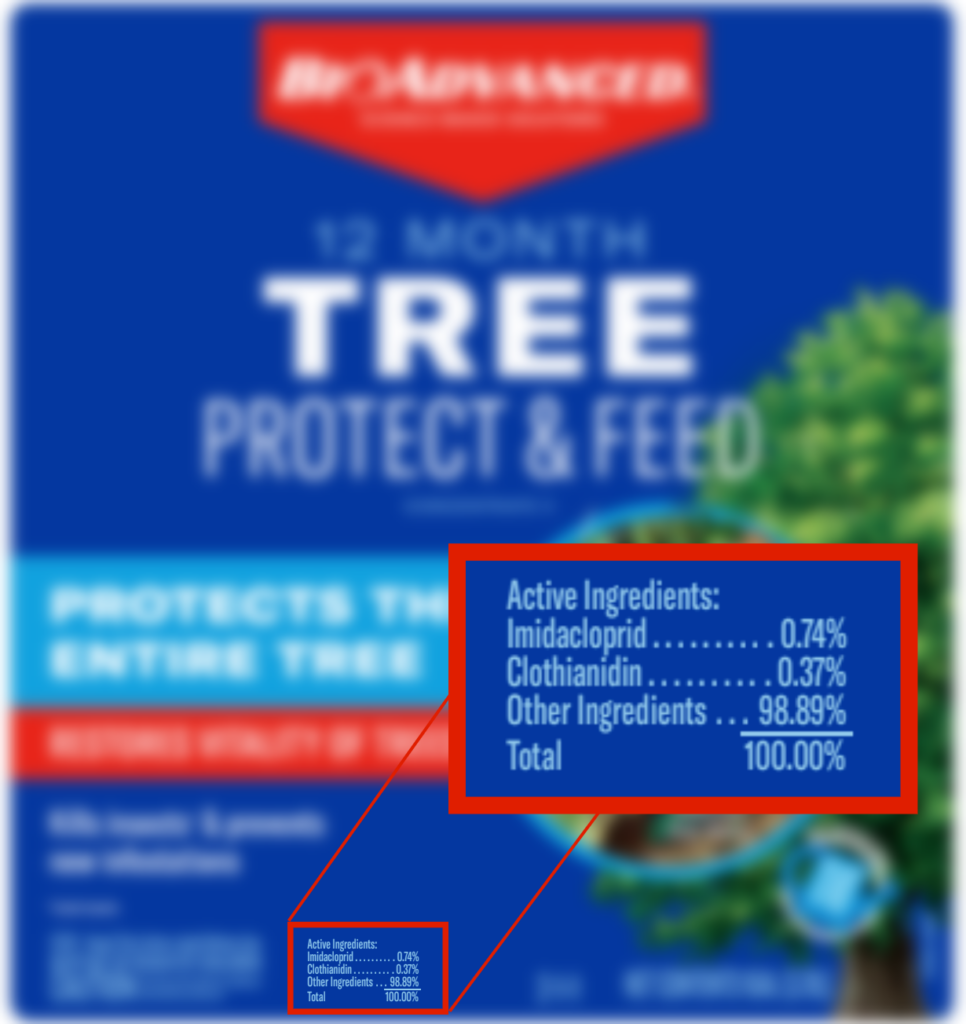
Tell Amazon to stop selling bee-killing pesticides
To save the bees, you should avoid toxic bee-killing pesticides called neonicotinoids. Use our guide to identify which pesticides contain neonicotinoids.
Add your name
Lead Digital Campaigner, The Public Interest Network
Senior Director, Conservation America Campaign, Environment America Research & Policy Center
Bees and other pollinators are dying. One of the main culprits is a group of toxic pesticides called neonicotinoids that attack bees’ brains, paralyzing and ultimately killing them. Ending the worst uses of bee-killing pesticides can help protect pollinators.
One way you can help at home is to make sure that you’re not using any neonicotinoid pesticides around your home. And ultimately, not using any pesticides at all is the best way to help the bees.
Here’s our guide for how to identify what pesticides contain neonicotinoids.
Neonicotinoids are a class of pesticides – that means there are a few different types of chemicals that have similar effects. Also shorthanded as neonics, they’re compounds designed to target parts of the central nervous system of insects.
The issue is that neonicotinoids can’t tell the difference between what is considered a pest that threatens crops, and pollinators like bumblebees. Neonics kill insects indiscriminately and are devastating bee populations around the world.
There are five common neonicotinoid pesticides:
You can take a screenshot, save this photo or print it to keep our handy guide to neonics with you.

Photo by Staff | TPIN
Pesticide brands don’t go around advertising that their products contain bee-killing neonics. So you may have to do some light sleuthing to see if there are neonicotinoid chemicals in a pesticide.
Most of the time, pesticide bottles will have a label listing the active ingredients. Similar to a nutrition label on our food, you can look at this to see the primary chemicals in the pesticide. If any of the active ingredients include “acetamiprid,” “clothianidin,” “dinotefuran,” “imidacloprid” or “thiamethoxam,” that’s a neonicotinoid, and you should avoid using that pesticide.

An example of a pesticide bottle label with active ingredients, including imidacloprid and clothianidin. Both of those ingredients are neonicotinoids.Photo by Staff | TPIN
Sometimes the label is on the front of the bottle, and sometimes it’s on the back, so check all around.
If you’re shopping online, the images of the label might not include an active ingredient list at all, and when they do, it’s often in very tiny print that is hard to see. Look at the details toward the bottom of the product’s webpage to see if there is a list of ingredients.
The best way to protect bees and their ecosystem is to not use pesticides at all. If you’re unsure, try not to use pesticides.
Not everywhere. If you live in California, Colorado, Connecticut, Maine, Maryland, Massachusetts, New Jersey, New York, Rhode Island or Vermont, then your state has restricted bee-killing neonicotinoid pesticides.
By looking at it, there’s no way to tell whether a seed, seedling or plant has been treated with neonics. Asking your local nursery or plant center is the best way to figure out whether the plants and seeds you’re thinking of buying for your garden have been treated with neonicotinoids or other harmful pesticides.
To protect bees and your health, the best option is to not use pesticides at all. Neonicotinoids are particularly concerning for bees, glyphosate is harmful to pollinators including monarch butterflies, and other pesticides can be harmful to human health.
We suggest going without pesticides, embracing imperfection in your garden or lawn, and letting nature do its thing.
But if your tomatoes keep getting eaten or weeds are crowding out your plants, there are plenty of alternatives to pesticides to consider. The best practices for your own lawn or garden will vary based on where you live and what kind of garden you’re growing. Your local garden center is a great place to start for advice.
For managing pests in your garden, this resource offers some options for alternatives to bee-killing pesticides.
Weedkillers can also be harmful to bees and other pollinators. If weeds are your issue, first think about what a weed actually is. For example, how much does it matter to you if there are a couple dandelions in your yard?
Shop Our Store
In addition to avoiding toxic bee-killing pesticides, you can help save the bees in your own backyard by planting flowers that bees love. Make your garden a welcoming habitat for your neighborhood bees with this lovely, all-zones appropriate bee-friendly garden kit.
Get your Bee Friendly Garden Kit
Morgan writes online content for Environment America, PIRG and Environmental Action's campaigns. In her previous role, she worked as the Destination: Zero Carbon campaign director for Environment America. Morgan lives in Ardmore, Pennsylvania, with her partner and their dog Macchiato (aka Otto), where she enjoys reading, Zumba and going to the off-leash dog park.
Senior Director, Conservation America Campaign, Environment America Research & Policy Center
Started on staff: 1991 B.A., Wartburg College Steve directs Environment America’s efforts to protect our public lands and waters and the species that depend on them. He led our successful campaign to win full and permanent funding for our nation’s best conservation and recreation program, the Land and Water Conservation Fund. He previously oversaw U.S. PIRG’s public health campaigns. Steve lives in Sacramento, California, with his family, where he enjoys biking and exploring Northern California.
